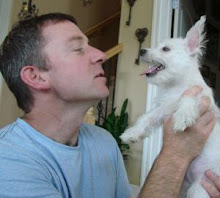Posted in
Labels:
Allowing for Student Choice during Writing,
Discussing Writing Samples at the Analysis and Evaluation Level
I've been doing demonstration lessons with fourth graders this last week; tomorrow, I start working with the sixth graders for samples. We're gathering student samples to be used as discussion tools in the NNWP's new Narrative Writing Resource, which comes out this March! It's going to be a fantastic new resource guide.
The prompt I was working with when I met with the fourth graders (see the video in the previous post) was "If you could give a special award to a deserving person, what would it be and why would that person deserve the award?" I ran the event as a little "contest," saying the winners would be featured in the new guide, which was a great motivator.
I got great samples from such a wonderful group of kids; I am sure showing them the video long before they began writing was really instrumental in receiving so many fun samples. I'm adding this technique to my bag of tricks.
Here's one we didn't select as a "winner," but it's one of my favorite samples from the bunch. I love Kaya's introduction more than anything. :-)

The Best Male Writing Teacher Award
by Kaya, fourth grade writer
Have you ever thought that you’ve met the best male writing teacher in the world, and your friend thought the opposite? Well, that’s called an opinion and this is my opinion on who the best male writing teacher in the world is…Mr. Harrison.
The number one reason that I’d give the award “Best Male Writing Teacher in the World” to Mr. Harrison is because he gives great ideas to grown ups and kidsas well. Once in Mrs. Espinosa's Class, he gave great ideas on what to write about for this awards assignment, which is what I’m writing about now. He even has this website that teachers can go on to find a fun assignment for their classes.
The second reason Mr. Harrison should get this award is that he goes over a lot of ideas in his head before he decides what he is going to write about. Like the time he wrote about four characters he wanted to put into stories. He spent a long time just thinking about what their names were going to be.
I’d give this award to Mr. Harrison because it's my opinion on who the "Best Male Writing Teacher in the World" is.
Thanks, Kaya...I think you've got a charming writing style, and you know how to choose a great topic. What advice would you give this young charmer for making her next draft even better?




